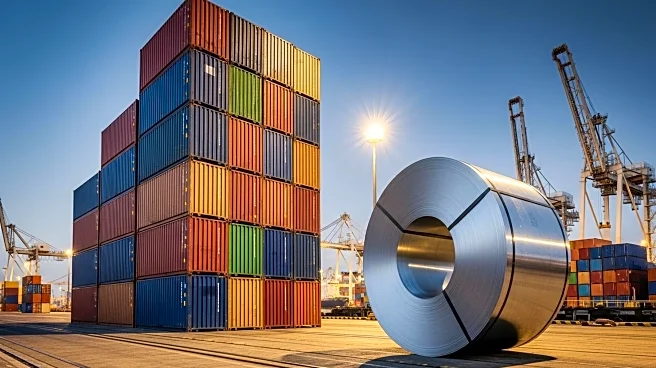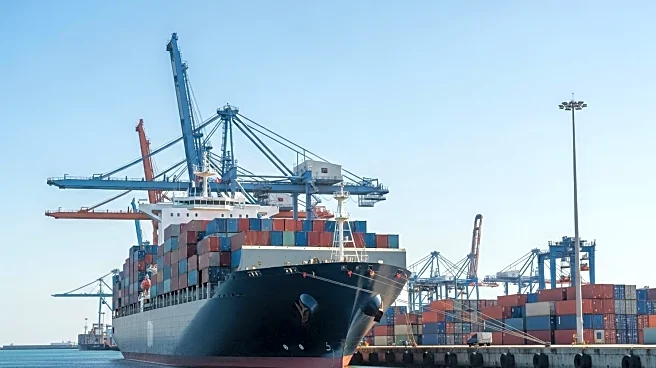What is the story about?
What's Happening?
Port Houston experienced significant growth in July, marking one of its strongest single-month performances on record. Container volumes increased by 21% compared to July 2024, reaching 392,829 twenty-foot equivalent units (TEUs). Year-to-date, the port has handled 2,562,506 TEUs, up 6% from the previous year, making this year the fastest-paced in the port's history. Loaded imports surged by 19% in July, the largest increase among the top five U.S. container ports. Loaded exports, primarily resins, grew by 18% compared to last year. General cargo volumes rose 10% year-to-date, with steel imports up 41% compared to July 2024. Overall tonnage across public facilities reached 32,647,865 short tons, up 6% from the prior year. The construction of Wharf 7 at Bayport Container Terminal is on track for early completion, enhancing vessel capacity and reducing anchor wait time.
Why It's Important?
The growth at Port Houston is significant for the U.S. economy, particularly in the logistics and trade sectors. The increase in container volumes and steel imports indicates robust demand and economic activity, benefiting industries reliant on these materials, such as oil and gas. The port's expansion and infrastructure improvements, including the early completion of Wharf 7, will enhance operational efficiency and capacity, supporting future growth. Additionally, Port Houston's commitment to sustainable development, recognized by the Environmental Excellence Award, highlights the importance of environmentally responsible practices in large-scale infrastructure projects. This expansion supports larger vessels, boosting trade capabilities and positioning the port as a key player in international shipping.
What's Next?
Port Houston's infrastructure growth plan will continue to add container capacity at public terminals, with Wharf 7 expected to be completed by December. The Houston Ship Channel Expansion, or Project 11, will allow larger ships to call at Bayport Terminal, with the final Port-led portion of dredging scheduled for completion later this summer. Additional segments will be led by the U.S. Army Corps of Engineers. These developments will likely attract more business and increase the port's competitiveness in global trade. Stakeholders, including shipping companies and industries reliant on imports and exports, will benefit from improved efficiency and capacity.
Beyond the Headlines
Port Houston's expansion efforts reflect broader trends in the logistics industry, emphasizing the need for sustainable development and infrastructure improvements to accommodate larger vessels and increased trade volumes. The port's environmental initiatives, such as repurposing dredged material for ecological projects, set a precedent for balancing economic growth with environmental stewardship. This approach may influence future infrastructure projects across the U.S., encouraging similar practices to mitigate environmental impact while enhancing operational capabilities.
AI Generated Content
Do you find this article useful?















